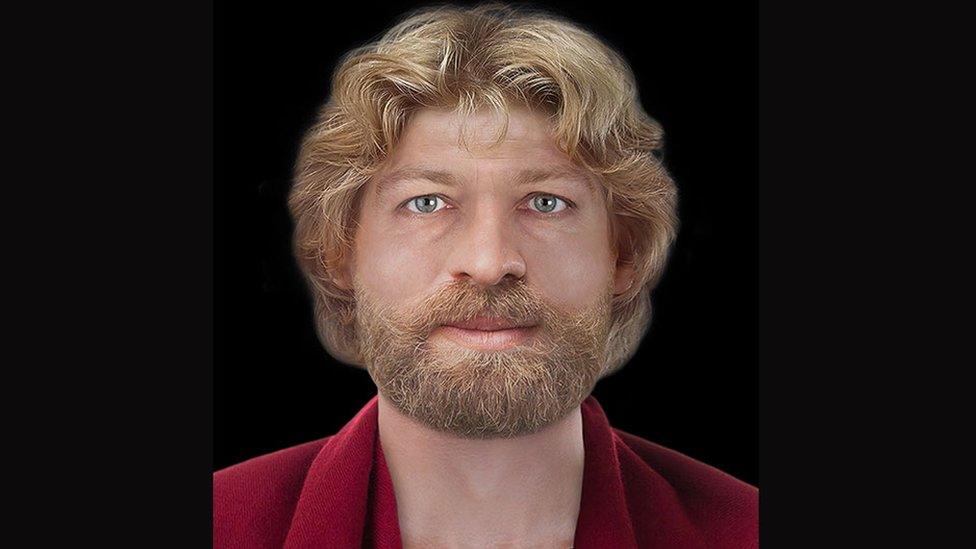The day they found a Viking martyr in a hole in a wall
- Published
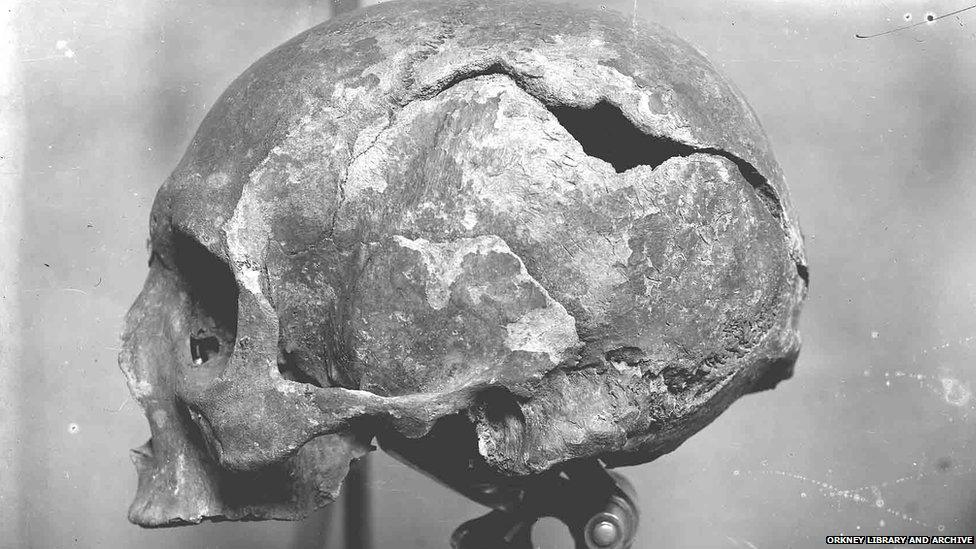
The skull found hidden in the pillar shows what seems to be a catastrophic axe wound
Exactly 100 years ago what are believed to be the bones of St Magnus were rediscovered in the cathedral built in his honour in Orkney.
They were originally the centrepiece of a shrine at the twelfth century church in Kirkwall.
It is thought the bones were hidden in a pillar during the Reformation, only to be found on 31st March 1919.
Viking sagas relate how Magnus was martyred on the orders of his cousin Hakkon.

The Orkneyinga Saga
When Magnus the friend of God was led out to slaughter, he spoke to Hakkon's cook Lifolf: "Stand thou before me, and hew me on my head a great wound, for it beseems not to chop off chiefs' heads like thieves'; strengthen thyself, wretched man, for I have prayed for thee to God that he may have mercy on thee." After that he signed himself with the cross, and bowed himself to the stroke. And his spirit passed to heaven. The spot where it happened was mossy and stony. But in a short time, the worthiness of earl Magnus before God was so bright that there sprung up a green meadow.

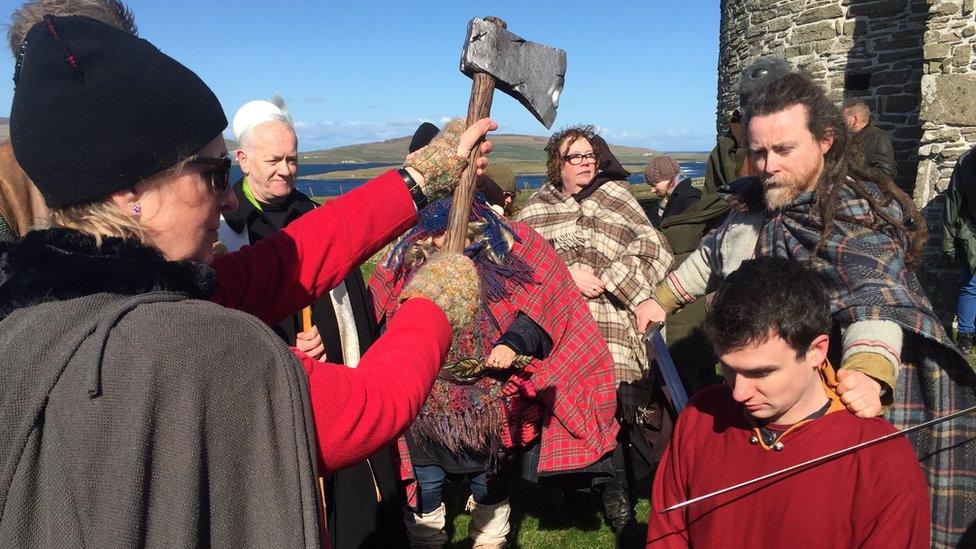
The martyrdom was re-enacted on the island of Egilsay during Magnus 900 commemorations
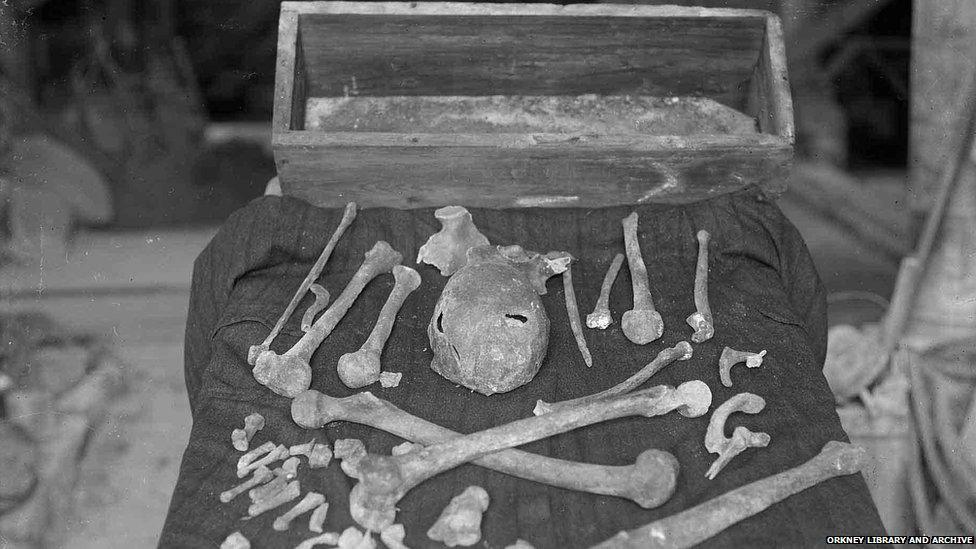
The bones were in a plain box placed in a cavity within the pillar
Fran Flett Hollinrake, custodian at the cathedral, told BBC Radio Orkney, external it had been built as a site of pilgrimage.
"The shrine of St Magnus would have been here in the Middle Ages, and pilgrims would have come from all over the north of Europe.
"But in 1560 Scotland went through its Reformation, and changed from being a Catholic country to a Protestant one. One of the fundamental changes is that the church no longer recognised saints.
"It was believed for many many hundreds of years that when the shrine was dismantled the bones of Magnus had either been destroyed, or had simply vanished."

A plaque on the wall marks the pillar where the box of bones was found
But in 1919 workman were restoring the building, thanks to a bequest of money from Cathedral benefactor Sheriff Thoms.
They discovered one of the stones, high in a pillar near to the site of the original shrine, was loose.
When the stone was edged out they discovered a cavity, inside which was a plain wooden box.
And inside that there was a set of bones, including a skull, which appears to have suffered what could be the "great wound" as described by the saga.
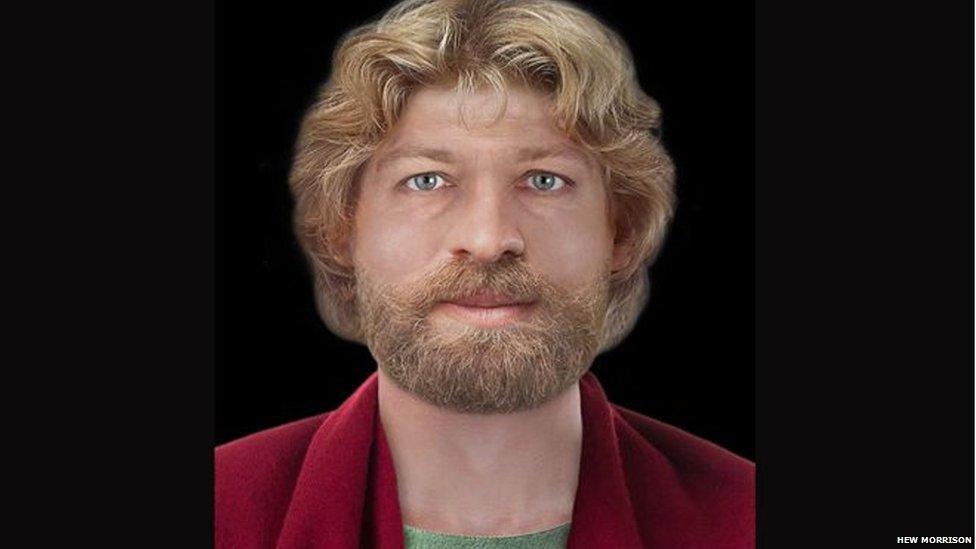
Forensic artist Hew Morrison reconstructed St Magnus's face based on photographs and measurements of the skull

The Roman Catholic diocese of Aberdeen presented the cathedral with an icon of St Magnus
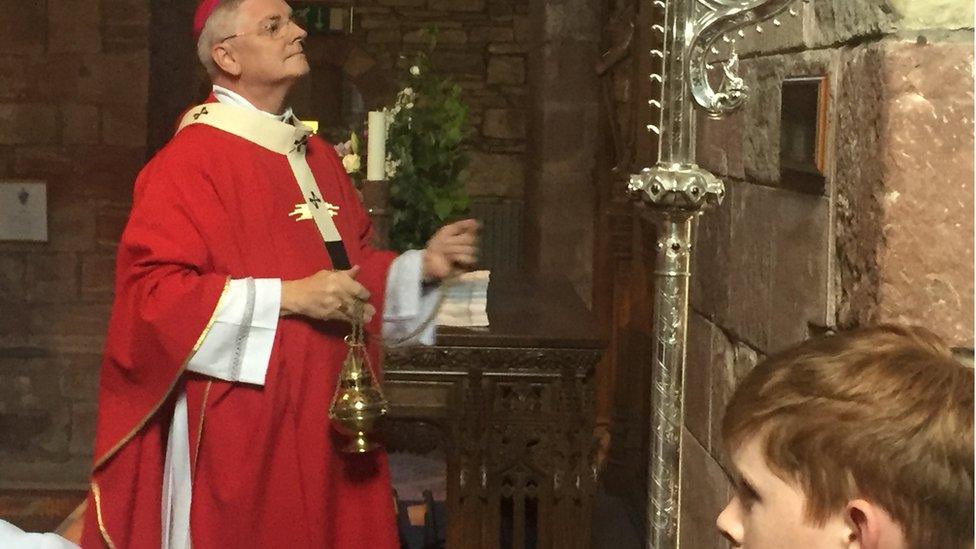
Archbishop Leo Cushley paused to honour the saint during a pilgrimage to Kirkwall
Cathedral custodian Fran Flett Hollinrake said: "Our belief is that when the clerics were told they had to get rid of their saint, they decided to risk everything and hid the bones in this pillar to make sure that he was safe.
"If it is St Magnus, and we think it is, we are the only church in Scotland that still has the bones of its original saint."
"When the bones were found in 1919 they used whatever technologies they had available at the time, and they were examined by a professor of anatomy at Aberdeen University."
Six years after being found the bones were re-interred in the pillar, and the spot marked with a cross high on the stonework and a plaque nearer the ground.
And even though technology has now moved on and the science is now available for carbon dating and DNA testing, there are no imminent plans to disturb the remains.
"St Magnus has been safe in his pillar since 1925. And there are no plans to take him out," said the cathedral custodian.
- Published17 January 2019

- Published30 July 2017
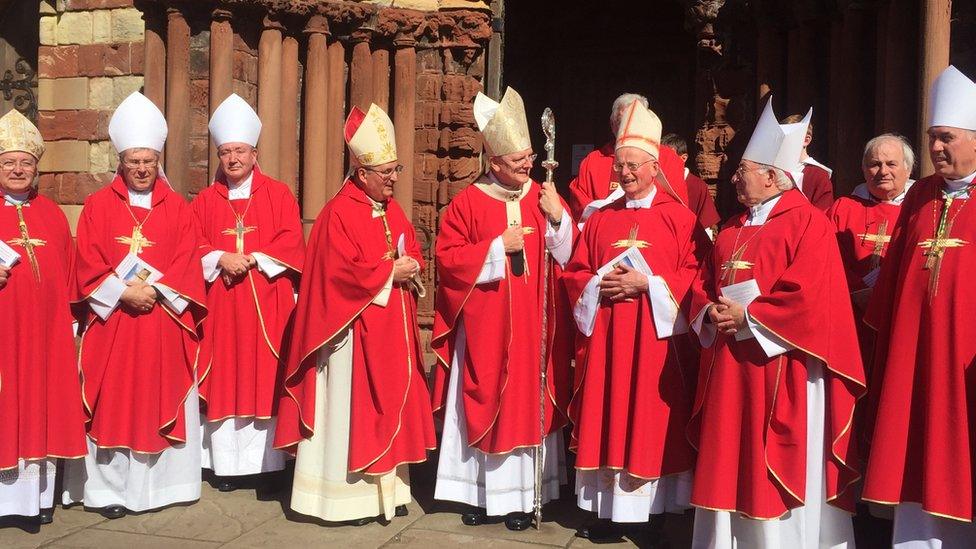
- Published8 February 2017
